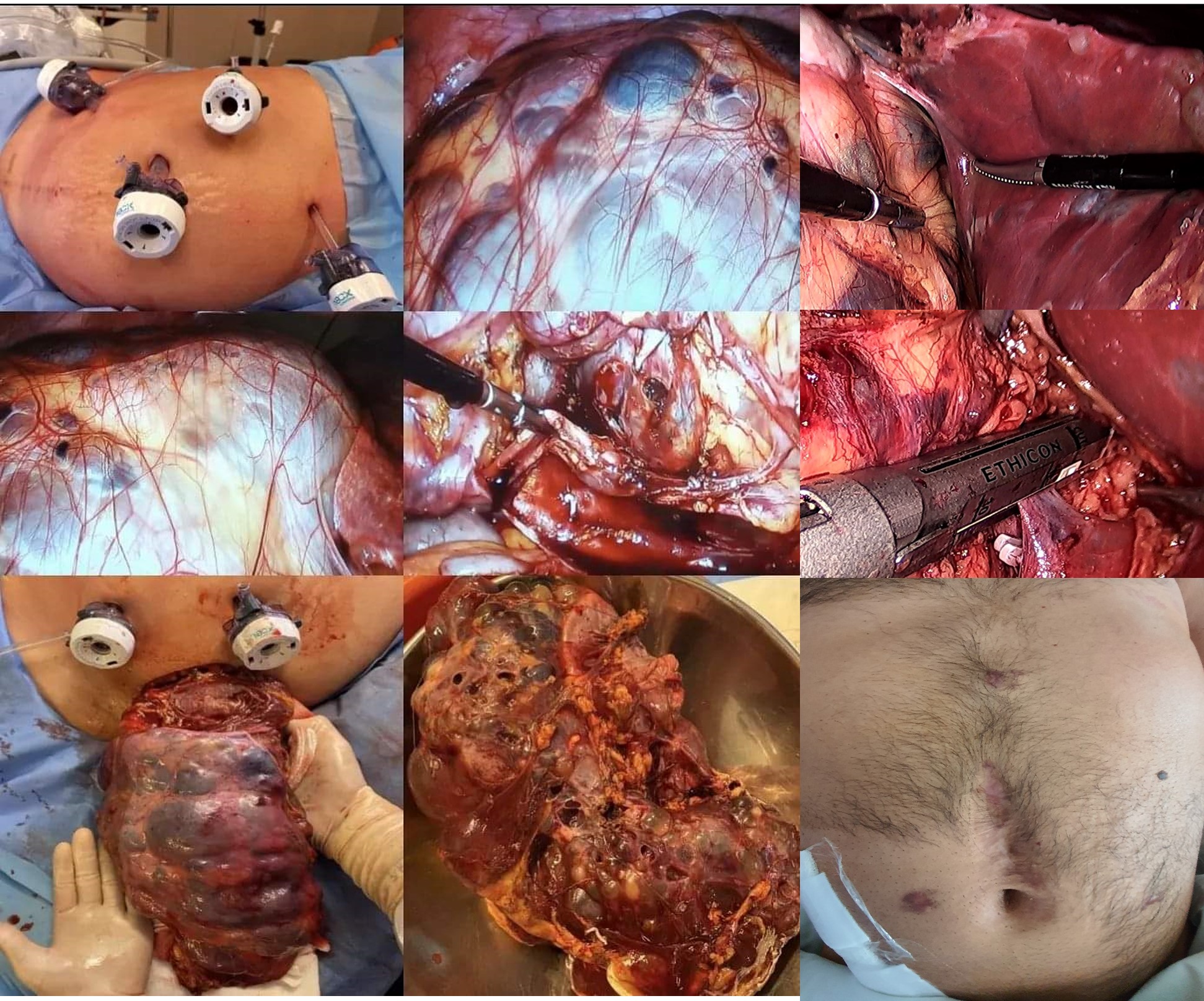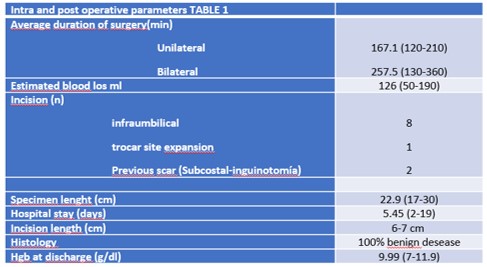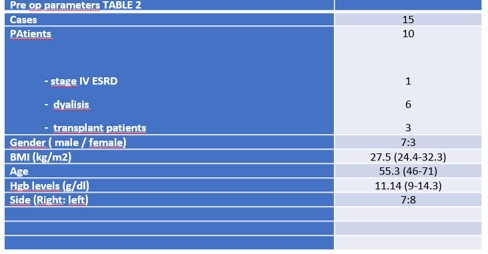Laparoscopic nephrectomy for autosomal dominant polycystic kidney disease
Ignacio Cabrera1, Francisco Osella1, Javier Walther2, Luis Leon2, Olga Guardia2, Pia Glorioso2, Raquel Gianserra2, Maria del Carmen Rial2.
1Surgery Kidney Transplant, ITAC by Diaverum, Buenos Aires, Argentina; 2Kidney Transplant, ITAC by Diaverum, Buenos Aires, Argentina
Introduction: Autosomal dominant polycystic kidney disease (ADPKD) is a monogenic multisystemic disease, characterized by the development of cysts in both kidneys and other extra-renal manifestations. It has a prevalence of 0.1-0.25% and is responsible for 10% of all cases. of terminal chronic renal failure (ESRD).
Globally 50% of affected individuals will progress to ESRD. Bilateral nephrectomy adequately resolves symptoms, but studies report a high rate of complications, with 38% morbidity and 3% mortality. Also, concern regarding kidney graft damage or sequelae of the anephric state reduced the percentage of nephrectomies in ADPKD, but Sulikowski et al. reported that more than 40% of patients without pre-transplant nephrectomy needed it later due to multiple complications in native polycystic kidneys. Since the first description of laparoscopic nephrectomy in ADPKD by Elastry et al., they have reported decreased morbidity compared to open nephrectomy. Several authors obtained the same results, both with unilateral and bilateral laparoscopic nephrectomy.
In this report , we will carry out a review of the surgical technique, and we will analyze the results obtained by our center with laparoscopic nephrectomy in PKD.
Methods: Retrospectively, we reviewed the medical records of patients with ESRD secondary to ADPKD, who underwent laparoscopic nephrectomy between January 2018 and July 2020. The characteristics evaluated in the patients were: age, body mass index (BMI), surgical indication . Intraoperative and postoperative analysis included duration of surgery, estimated blood loss, hemoglobin drop, blood transfusions, length of hospital stay, pathology, and complications. These were reported using the modified Clavien classification for surgical complications. Surgical technique was sumarized in fig 1.

Results: with a study period of 2.5 years, 10 patients (Men: 7, Women: 3) underwent laparoscopic nephrectomy, performing a total of 15 nephrectomies. 4 underwent laparoscopic binephrectomy in 1 stage, 5 unilateral nephrectomy patients,and 1 binephrectomy patient in 2 stages. The surgical indications were: create space for the future transplant in 3 cases, recurrent urosepsis in 6 cases, and recurrent bleeding in 1 case. The preoperative parameters are shown in Table 1. Table 2 shows the perioperative evolution


Conclusion: Laparoscopic nephrectomy in ADPKD is a safe and effective technique, offering good results and low morbidity to patients Although open nephrectomy is associated with high postoperative morbidity, such as prolonged hospital stays, postoperative pain, vascular access complications, postoperative ileus, transfusion needs, it continues to be one of the most widespread methods in our environment to treat these patients. Laparoscopic surgery with all the benefits of minimally invasive methods has its place in these patients, achieving very good results.
